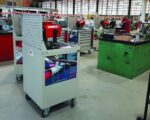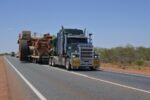Suhner equips TAFE NSW with metal finishing stations
Suhner Australia has progressively rolled out its Metal Finishing Stations to help TAFE NSW provide its students with access to quality professional tools as they learn to master metal finishing with a clear Industry involvement. Six Suhner Complete Metal Finishing Stations were recently delivered to TAFE NSW Newcastle. This is the latest instalment in a rollout that commenced in 2018 with Wetherill Park, and an enduring TAFE-industry partnership of over 20 years. The modular units consist of a free-standing, metal storage cabinet on wheels. Divided into draws for fast and easy access, the cabinet includes much of Suhner’s leading metal polishing tools and abrasives. The Rotomax 2 Flexible Drive machine forms the cornerstone of the unit. This tool allows apprentices to choose from 124 speed settings between 500Rpm and 13,000 Rpm, four different abrasive tool head options, and infinite power and flexibility with world class safety features. The popular Suhner UTC tube polishers and USK straight grinders as well as the complete range of Suhner Electric Power tools also form part of the station. “With the Suhner Metal Finishing Station, TAFE NSW apprentices have access to the highest quality tools and abrasives available that allow them to concentrate on learning the processes and skills involved with metal polishing and finishing,” explained Mr Robert Bartrum, General Manager, Suhner Australia Pty Ltd. “Suhner also helps ensure that our TAFE NSW apprentices are right up-to-date with current best practices,” he added. Teachers from the Advanced Manufacturing Trades section at TAFE NSW Wetherill Park; Lucas Archer and Jason Morgan, said the longstanding relationship between TAFE NSW and Suhner Australia meant graduates were getting the very best industry-aligned training using top of the line equipment. “TAFE NSW is proud to be working with Suhner Australia to give our students the very best hands-on training with […]










